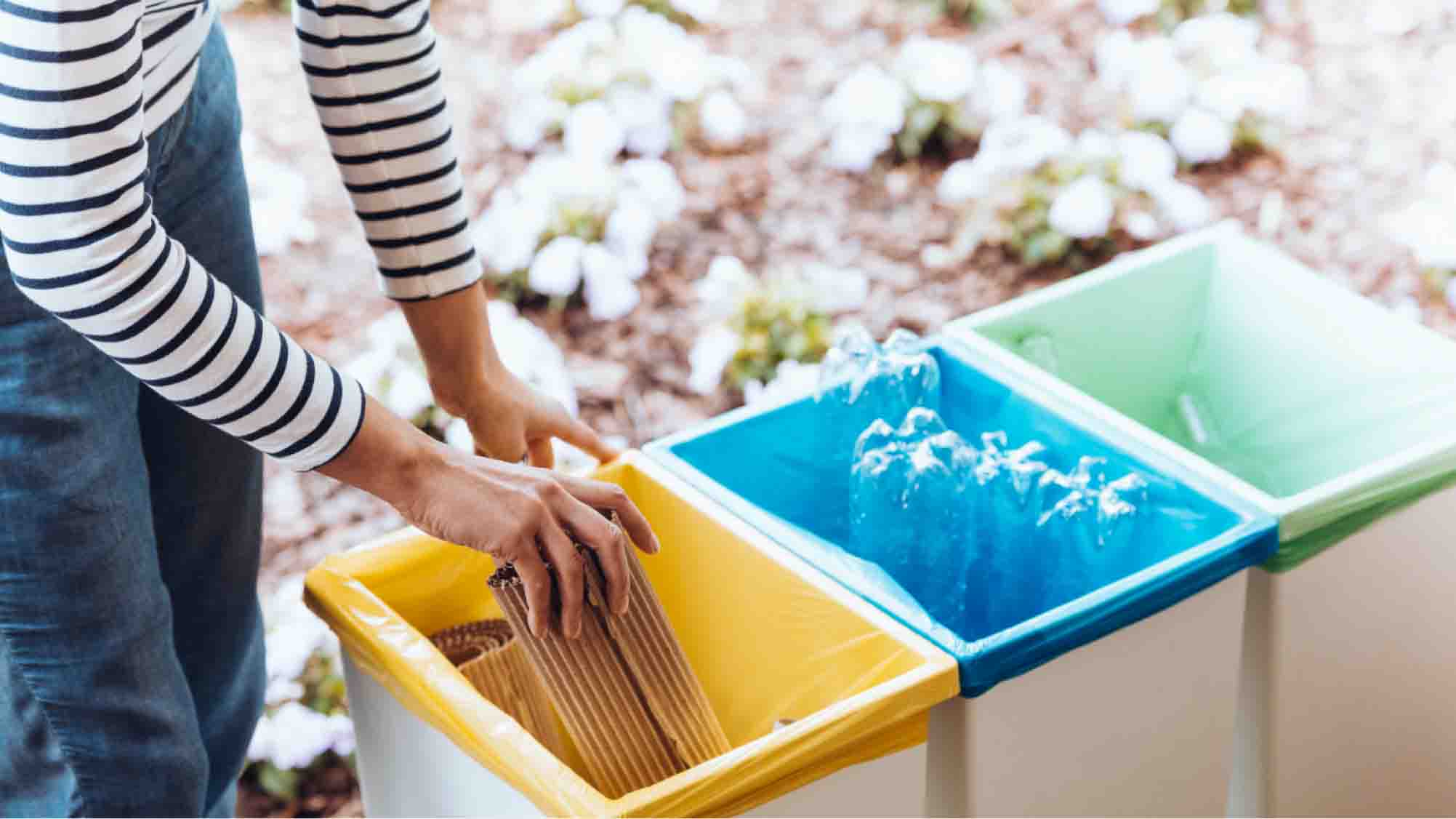
Lorenzo Baronti 
Masters in Circular Economy - Università degli Studi della Tuscia
Sometimes it may seem tiring and useless, but differentiating waste based on the material it is made of is one of the most important practices to be adopted every day to reduce the environmental impact, that’s why it is important for us at Alkebulan to write about this topic.
For those unfamiliar with this management system, it consists of the waste collection activity by the company in charge directly from the citizens’ homes, thus avoiding the use of large bins along the streets of the cities and trying to increase the practice of separate collection.
Separate waste collection is the process of sorting and collecting different types of waste materials into distinct categories or streams, such as paper, plastic, glass, metal, and organic waste, to facilitate their recycling, treatment, and disposal. This approach aims to reduce the amount of waste sent to landfills or incineration facilities, conserve natural resources, prevent pollution and environmental degradation, and promote a circular economy.
The main principle behind separate waste collection is to prevent the mixing of different types of waste, which can compromise their quality and value, and hinder their recovery and reuse. By keeping materials separate, they can be processed more efficiently, using less energy and resources, and producing less pollution and greenhouse gas emissions.
To implement separate waste collection, municipalities and waste management companies usually provide residents and businesses with various collection bins or containers, each designated for a specific waste stream. For example, a typical system may include bins for paper and cardboard, plastic bottles and containers, metal cans and foil, glass bottles and jars, food waste, and residual waste. Some systems may also include separate collection for hazardous or special waste, such as batteries, electronics, light bulbs, or medical waste.
In some cases, separate waste collection may be mandatory, with fines or penalties for non-compliance, while in other cases it may be voluntary, relying on education and awareness-raising to encourage participation. Some countries and regions have also introduced economic incentives, such as pay-as-you-throw schemes, where users pay a fee based on the amount of waste they produce, to encourage waste reduction and recycling.
The benefits of separate waste collection are numerous and significant. Firstly, it helps to reduce the environmental impact of waste management by diverting valuable resources from landfills and incinerators, which can emit harmful pollutants and greenhouse gases, to recycling and composting facilities, which can reduce energy consumption and emissions. Secondly, it contributes to the conservation of natural resources, such as forests, oil, and minerals, by reducing the need for virgin materials and supporting the development of a circular economy, where waste becomes a valuable resource.
Thirdly, separate waste collection can help to create jobs and stimulate economic growth, by supporting the recycling and waste management industries, which require skilled workers and investment. Fourthly, it can improve public health and safety, by reducing the risk of pollution and contamination, and promoting better hygiene and sanitation. Finally, it can enhance the quality of life and well-being of communities, by promoting a cleaner and more sustainable environment, and reducing the visual and olfactory impact of waste.
Secondary raw materials
Paying attention to separate collection gives the possibility of classifying waste on the basis of the different recycling properties, thus favoring their transformation into the so-called secondary raw materials, a new type of raw material that is part of the production cycle as a material. basis for the creation of new products.
In fact, the second raw materials represent a new and cheaper source of supply for those companies that often cannot bear the price of raw materials whose purchase and disposal cost is undergoing an exponential increase in many cases, thus combining environmental and economic efficiency.
The recycling and reuse of waste also represents a considerable saving at the municipal and state level, the amount of which can therefore be reinvested in public goods and services.
Economic, environmental and social benefits
The transformation of waste into secondary raw materials also requires certain specific technologies, the implementation of this production sector in fact generates the birth of a new market, new businesses and therefore new jobs.
Basically, the better it will be carried out in households, the better it will be possible to start a circular production process without hitches and additional costs. The gestures of daily life significantly determine the environmental impact generated by each individual (in the US, a citizen produces about 25.9 tons of carbon dioxide in a year). For this reason, an improvement from this point of view of the daily activities by individual citizens can significantly increase civic education and awareness of respect for the environment.
Separate collection is a very simple practice that, if done correctly, truly reduces the environmental impact that weighs on us, improving the environment in which we live and reducing pollution.
Here is a small summary of advices to carry out a correct separate collection:
- Paper and Cardboard: empty and crush the boxes. Remove the cellophane from the magazines. Eliminates adhesive tapes and other non-cellulosic materials. In order to be recycled, the paper must be clean so do not give away greasy, dirty or contaminated paper with foreign substances;
- Multi-material: always empty the containers and squeeze them lengthwise. Remove organic residues from plastic trays, jars and plates before throwing them away. The poly-laminate cartons for drinks and food are collected with the multi-material: crush them before giving them;
- Glass: empty the jars and bottles and make sure they are free of organic residues before throwing them away. If the caps and lids are not glass, remove them and place them in the multi-material. Be careful not to give crystal, pyrex or ceramic objects to the glass: small fragments of these materials could make it impossible to recycle;
- Organic: compostable disposable tableware can be thrown away in the organic together with food residues. The ashes from the chimney must cool for at least 48 hours before being thrown into the container. Organic waste must be disposed of in roadside containers or tubs in tightly closed compostable bags;
- Unsorted: transfer to unsorted waste only what cannot actually be recycled. Close the bag well before throwing it out and make sharp or pointed objects harmless;
In conclusion, separate waste collection is an essential component of modern waste management, which promotes sustainability, resource efficiency, and environmental protection. By sorting and collecting different types of waste materials into distinct categories, we can minimize the negative impacts of waste on the environment, economy, and society, and maximize its potential for recovery and reuse.

